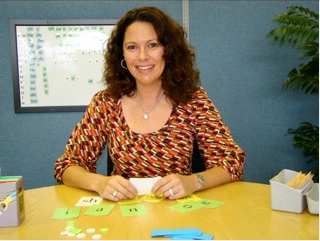
by PRIDE Reading Program Admin | Dec 12, 2017 | A PRIDE Post, ADHD

The school year is in full swing and the homework load is heavy! Many parents here at PRIDE complain to us frequently that their kiddo just can’t get through the homework load and it is causing a lot of tension and frustration. I put together a few tips and strategies on how to lighten the completion time and reduce the stress at home and just finish that homework quicker for you parents out there with an ADHD child. Hope this helps!
1. Schedule an established time to do homework daily.
Most children with ADHD need set routines and schedules in order to feel success. Help your child find a time for homework that works out in both your daily schedules. Some children do best right after school, whereas others need an outside fresh air break first. Because you know your child better than anyone, find that perfect time and make it part of the daily routine. This will help get through the workload quicker. I have my child take the dog for a walk around the block first, then come home to some milk and cookies and then settle down for homework. This routine works really well for us on a daily basis, and my son feels comfortable knowing the daily routine.
2. Take 5-minute breaks after every 20 minutes.
Find a structured break activity that your child can do after every 20 minutes of work. This could be a yoga stretch on the floor, deep breathing activities, etc. If you keep the break structured, the child will understand this as part of the routine and not a time to wander off and get distracted and lose focus. Short, frequent breaks help children recharge. This should get your child back to a focused state of mind and get through that homework quicker. I sometimes have my son do push-ups or chin-ups (he is pretty athletic and likes physical movement) we make it a game of increasing the repetitions each time.
3. Let your child stop when they can’t continue on.
If your child is too tired or frustrated to finish the homework, let him or her stop!
Experts in the field of education usually recommend that elementary students do 10 minutes of homework per subject per day. If your child’s homework sessions are taking longer than this, schedule a meeting with your child’s teacher to discuss the problems that your child is facing. It could be that the amount of homework is overwhelming or that it is too difficult for your child. If your child has problems focusing, writes and reads very slowly, or needs extra time understanding concepts, then homework will consistently take longer to get through. Make a plan with the teacher so that your child will feel success with homework and everyone’s time will be well spent.
4. Request an extra set of textbooks to use at home.
My son forgets his book at school at least twice a week. This is pretty common for a kid with ADHD. Students with organizational issues often leave their books at school. I bought a copy of each of his textbooks online used. This way we always have a copy at home and spend less time getting back to school to recover all the forgotten items. Having the homework material every day at home is crucial. Once a student falls behind in their coursework, it is extremely difficult to get caught up. Since so many schools do not have extra copies, you will probably need to purchase extra copies on your own. This will save many after school trips back to the school and give you more time to get through that homework load instead.
5. Find the right location for your child to do daily homework.
Make sure it has good lighting and a clear workspace with no clutter around. Children with ADHD become easily distracted at their workstations. Keep the homework area free of anything except a good supply of paper, sharpened pencils and a set of erasers, pens, and a computer or laptop. This will keep your child focused and hopefully help them get through that homework load a lot faster. I let both my children find their perfect spot. Both of my kids like to lay on their beds with their laptops and spread al the papers and books around the bed. It works for them.
6. Help your child organize papers for after-school homework and prepare for the next school day.
Watch your child put completed homework in the proper folders and put the papers that need to stay home in an accordion file that stays at the child’s workstation at home. All work that comes home should go in this labeled accordion file for future tests and quizzes (especially when they are in Middle and High School). All work should be saved until the semester is over. My son needs a lot of help with this as his homework usually ends up all over the floor. We go through it together. Getting through the homework is already incredibly challenging for him and I prefer to pick my battles. I do not mind helping him organize and put it where it needs to go. My daughter on the other hand always likes to organize her own backpack and put everything away nicely and neatly. Sigh… wish a little of that would rub off on her brother.
7. When your child has completed their homework, always praise them for a job well done.
If a parent conveys the message that a child is capable and worthwhile, the child will begin to believe this. Being supportive, having a structured learning environment and consistent routines will encourage success and motivation at home.
Have any other ideas that I missed? Please include them in the comment section below. Thank you so much for visiting my blog today!

Karina Richland, M.A., is the Executive Director of PRIDE Learning Centers, LLC, an educational company that works with children in special education and focuses on reading, writing and comprehension help. She is also the author of the PRIDE Reading Program, a multisensory Orton-Gillingham reading, writing and comprehension curriculum that is available worldwide for parents, tutors, teachers and homeschoolers of struggling readers.
Karina has an extensive background in working with students of all ages and various learning modalities. She has spent many years researching learning differences and differentiated teaching practices.
You can reach her by email at karina@pridelearningcenter.com or visit the website at www.pridelearningcenter.com

by PRIDE Reading Program Admin | Mar 12, 2017 | A PRIDE Post, ADHD
Following directions is one of the most difficult tasks for a child with ADHD to master. Children with ADHD are easily distracted and have a tendency to get sidetracked a lot. With a lot of patience and support, you can help your ADHD child learn to follow directions using these very simple tips and strategies.
1. Organize and simplify the directions:
Keep the directions as simply stated as possible so that your child with ADHD can remember them easily and not get lost in your words. Make the most important information stand out. “Sara, I want you to get your jacket, get your backpack and put on your shoes, then come back here to me. Got that? Jacket, backpack, shoes. Go!”
2. Use multisensory strategies to help the memory:
You can sing and dance the directions with your ADHD child. “jacket, backpack, shoes, yee-hah!” You can have your child clap his hands or tap the table for each step he needs to do.
3. Teach your child to repeat the directions:
Have your child repeat each direction a few times. “get out a piece of paper, a pencil and write my name at the top of the paper. Paper, pencil, name. Paper, pencil, name.”
4. Make charts for procedures or routines that are repeated:
This is especially helpful for organizing and keeping a routine. For example if you have a list of items that need to be done each day before school you can create a checklist.
1. _____ make my bed.
2. _____ put dirty clothes in the hamper.
3. _____ feed the dog.
As your child completes a step, he/she can check that step off the list. This will give your child some direction and keep the attention on the task at hand.
5. Be supportive and stay positive!
Nagging your ADHD child is not going to assist them in learning strategies and skills to follow directions. You can provide support for your child by:
- prompting your child for listening skills. “I am going to give you the directions, I would like you to please look at me so I know you are listening.”
- asking your child how you can provide a reminder for them without nagging them. They might suggest a hand gesture or a tap on the wall, a wink of the eye, etc.
- offering understanding when your child feels frustration. ” I understand it is hard to keep track of doing so much at once. Would you like me to help you put together a list that we could start checking off after each step?”
- praising your ADHD child often. If they don’t complete the task praise them for making an effort. If your child fails to complete a task, encourage her/him to try to get it finished. Use positive encouragement.
Learn more about the New PRIDE Reading Program
_________________________________________________________________________________________________

Karina Richland, M.A. is the owner of PRIDE Learning Centers, located in Southern California. Ms. Richland is a reading and learning disability specialist. Ms. Richland speaks frequently to parents, teachers, and professionals on learning differences, and writes for several journals and publications. You can visit the PRIDE Learning Center website at: www.pridelearningcenter.com

by PRIDE Reading Program Admin | May 16, 2015 | A PRIDE Post, ADHD
by Dr. Nona Djavid
Our children are facing an epidemic. We live in an age that often replaces health with prescription drugs. 1 out of 10 American children has attention-deficit/hyperactivity disorder (ADHD). But what is even more alarming is two-thirds of those kids are taking prescriptions like Ritalin and Adderall, the very same drugs responsible for 23,000 emergency room visits in 2011. ADHD without prescription drugs is possible!
We may be setting a precedent here, where we are substituting healthy lifestyle choices with ADHD for dangerous prescription drugs. As a chiropractor certified to see children and babies, I try and educate parents who bring in their children to my office about the choices they have to help their children diagnosed with ADHD. When children and parents are given the tools and treatment needed for optimal nervous system function, life changing results happen. This happens every day in our office. There are so many alternatives to prescription drugs. Chiropractic care, which markedly improves neurological function and eliminates blockages in the nervous system, can help restore optimal function of your child’s nervous system and brain function.
3 Things You Can Do:
They Are What They Eat:
Gluten-free diets with little-to-no processed foods are the best choice, but if you can’t fully commit to that, then avoid empty carbs like white breads and buttery cracker snacks. These break down quickly into sugars, providing little nutrients, elevating blood sugar levels and interrupting proper neurological function. INSTEAD: offer grainy breads (oatnut or whole wheat crackers and breads.) You can replace buns and breads entirely with gluten-free quinoa breads or brown rice buns. Also avoid ALL sugary drinks. These are the principle contributor to increased incidence of diabetes in children. This means no sodas, fruit juices, sports drinks or ANYTHING with added sugar or Fructose. INSTEAD: Find clever ways to get them to drink more water. You can try blending or infusing their water with real fruit like strawberries, lemons, blueberries or peaches.
Check Their Spines:
Chiropractic care is a safe and effective method for the treatment of ADHD. Most cases stem beyond neurological, and can even be structural. Postural problems, when correctly adjusted with corrective chiropractic care, can help heal complications associated with ADHD. Postural misalignments can affect neurological development and inhibit complete and healthy brain function. With chiropractic, the structural problem can be identified and the neurological problem improved. With chiropractic adjustments, the spine realigns to its peak state. A correctly aligned spine creates an optimal nervous system – allowing for normalcy and balance in behavioral functions.
Get Them Motivated:
ADHD without prescription drugs is possible! It’s important to look deeper into your child’s wonderful creative mind, and channel their bountiful energy. Find activities that encourage your child to become more active and explore mental facets that they seem interested in. If they’re constantly climbing up on things, get them involved in indoor rock climbing! If they’re constantly peppering you with questions and asking how things work, maybe they’d be interested in film making. Often an overactive brain is misdiagnosed into a behavioral disorder.
Learn more about the New PRIDE Reading Program
______________________________________________________________
Dr. Nona Djavid
Founder & Lead Chiropractic Physician
Dr. Nona Djavid is a well-respected and trusted doctor of chiropractic and wellness coach with a private practice in Newport Beach, CA. Founder and head chiropractor at the Wellness Choice Center, Dr. Djavid is dedicated to the creation of transformative experiences of vitality for her patients, through nutritional counseling, lifestyle changes, and natural alternatives.
A graduate of University of California at Berkeley in the field of Molecular and Cellular Biology with an emphasis in Neurology, Dr. Djavid continued her education at Life Chiropractic College where she earned her post Doctorate studies in Neurology and Chiropractic Biophysics. With a background in neurological sciences she came to understand the nervous systems control over the body. Through her research the importance of the nervous system was evident as the key to the overall health of the body. Specialties of Dr. Djavid include postural correction, and a unique knowledge in extremity adjustments.
Dr. Djavid is also the founder of WOW – Women of Wellness group – an organization that empowers female health care professionals to build healthy caring relationships through education and integrated health and wellness services.
With a state of the art facility at her disposal, educational background and her genuine passion for life, people, and health, Dr. Djavid provides the very best care with intelligence and compassion. For more information check out her website at: www.wellnesschoicecenter.com

by PRIDE Reading Program Admin | Apr 29, 2014 | A PRIDE Post, Executive Functioning Skills
Executive functioning has become a very popular term in recent years, especially as it relates to treating children. In the past, diagnosis involving children’s attention, activity level, organizing and problem solving were made. However often little was discussed with parents regarding improving deficits, executive functioning, using behavioral techniques.
Executive functioning (also known as cognitive control and supervisory attentional system) is an umbrella term for the management (regulation, control) of cognitive processes, including working memory, reasoning, task flexibility, and problem solving, as well as planning and execution. It has also expanded to include organization and impulse control. Executive functioning affects not only children’s behaviors but expands to social abilities and their ability to learn. It includes their ability to self-regulate, to infer and ponder consequences, to encode information in memory.
What we deem largely as automatic, or multi-tasking, is often a skill that needs to be modeled and taught. Children can benefit from working on executive functioning whether they are typically developing, or have clinical diagnosis that includes impairments in these areas. Think about the things that cause stress in your home. Perhaps you begin to worry time and time again when your son doesn’t call you after baseball practice only to find out later he forgot to charge his phone. Perhaps your high school daughter realizes she has a project due the night before it is to be turned in, or maybe you have numerous calls from your child’s teacher with regards to forgetting materials, including books, pencils, homework. Many times, parents can be frustrated in the lack of executive functioning skills if they themselves have relative strengths in these areas. On the flip side, on many occasions when parents have difficulties in the same areas of executive functioning as their children, they sympathize with the children, and lack an understanding of how to help them other than to offer commiseration.
One of the greatest things parents can do to assist in helping their children grow in this area is scaffolding. Scaffolding is a teaching method that enables an individual to achieve a goal or task under adult guidance, or more capable peers. It is important to know what appropriate expectations would be, given your child’s developmental level. For instance, you wouldn’t expect your children to pack their own lunch at 3 years old.
Ways to increase executive functioning
- Identify situations that cause inattention or frustration (identifying situations that make your child or adolescent stressed. Bringing this to their attention will help you both problem solve alternative behaviors to make the situation easier).
- Change tasks frequently to decrease drain on working memory
- Frontload information especially when task is novel or not routine (practice a song that will be sung in the classroom or go over key points in a chapter that will be discussed in class before the teacher presents material)
- Cue your child to complete a task when in the same environment (i.e., ask children to clear their plate in the kitchen)
- Offer breaks that allow for physical activity
- Create a structured environment whenever possible
- Pair tasks your child has mastered with those that are new or more of an energy cost
- Encourage thinking of future scenarios (discussing an upcoming assignment or event with a child gives them the opportunity to collect appropriate materials and create a timeline).
- Underline key concepts when reading (parent or child should underline or highlight main points being read. When answering questions, read questions first, then material).
Dr. Robin Morris is a Clinical Psychologist. She holds a Masters in Family and Child Therapy and a Graduate Academic Certificate in Applied Behavior Analysis. Dr. Morris resides in Mission Viejo where she conducts psychoeducational assessments, school/home observations used to determine appropriate placements and services, as well as functional Behavior Assessments. you can contact her at (949) 351-3770 or email her at drmorris05@yahoo.com. Visit her website at drrobinmorris.com

by PRIDE Reading Program Admin | Jun 13, 2012 | A PRIDE Post, ADHD
The production controls of attention regulate the quality and efficiency of our output – the creations, activities, and behaviors that we produce. They promote good judgment, effective problem solving, and sound decision making. Based on the work of learning specialist, Mel Levine, MD, I will describe four common forms of production control and provide strategies for strengthening these controls at home.
Previewing control enables us to look ahead and foresee an outcome, a likely result of something we’re about to do or attempt.
Options control entails thinking about choices rather than doing the first thing that comes to mind.
Pacing control regulates output speed, so actions are not too fast or too slow.
Quality control involves monitoring quality of output, so improvements can be made. In performing a task or trying to behave in a certain way, it is important to know how we are doing (self-monitoring).
Strategies for Parents:
*To help develop previewing skills, parents can encourage their kids to come up with a plan before writing a report, starting a project, or drawing a picture.
Children need to preview consciously, to visualize and describe what the outcome or result is likely or desired to be.
*It is often helpful to stress previewing in a child’s area of talent. For example, a child who is good at carpentry might be asked to draw a rough sketch of what the final product will look like prior to starting the actual work. Parents should spend time discussing this sketch and helping the child think through possible revisions in advance.
*Kids can be helped with previewing as part of their summer reading. Before reading a book, they should try to preview what its content is going to be based on the book’s title.
*To work on the aspects of options control, parents can ask questions like: “What are the different ways we might do this? What do you think is probably the best way? What would be the worst way to go about this?” This sort of reviewing of alternative strategies can occur before preparing a report or studying for a test. Such techniques can also help with overall problem-solving skills.
*The same kind of help can be related to behavioral and social planning (e.g., “What’s the best thing to do about that girl who called you a bad name in school today? What are some other things you could consider doing? What would work best? Which of these possibilities is a bad idea?”).
*To help children with improper pacing, parents should discourage frenetic work patterns by avoiding statements such as: “You can watch television when you finish your work.” Offers of this kind may inadvertently encourage children to work as quickly and carelessly as possible.
*It can help a child’s pacing to set aside a certain amount of time each evening (or each weekday evening) for cognitive work. The whole family should be engaged in such activities. There is then no incentive to finish quickly, since it will only mean having to find some other brainwork to do.
*Kids who need specific help with self-monitoring and proofreading (quality control) can benefit from looking for discrepancies or errors in their work or in the work of others. They should be required to proofread their own work but only after an interval of hours or days has passed since the work was completed. It is very tedious for anyone to correct something immediately after completing it.
________________________________________________________________________________________________
Dr. Susan E. Cozolino is a Licensed Clinical Psychologist who has a private practice in Beverly Hills. She specializes in the assessment of Attention-Deficit Hyperactivity Disorder and Learning Disabilities in students ages 6 & up. Dr. Cozolino helps students understand and address learning challenges by conducting thorough assessments, creating individualized learning plans, and recommending and advocating for educational services, modifications and accommodations. Dr. Cozolino is also an Adjunct Professor at Pepperdine University Graduate School of Education and Psychology.








